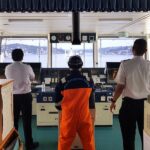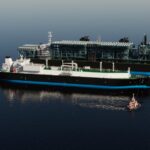Energy News Beat
Ronald Spithout from OneHealth by VIKAND gives his impression on how PEMEs should become a more valuable “health pulse” for crew and industry.
PEMEs are an accepted method of Pre-Employment Medical Examination and are meant to safeguard vessel operations and crew welfare. They are widely used by shipowners and operators to evaluate whether potential employees are fit to work in the demanding and often challenging maritime environment.
Yet, mounting evidence suggests that the current regime in which PEME’s are deployed is far from optimal where it comes to supporting sustainable improvements for crew and shipping industry.
As current PEMEs are merely a ‘snapshot’ – detecting the moment rather than being a component in the execution of a social strategy – they are in practise mostly functioning as an ‘exclusion tool’, driving a culture that discourages full disclosure of health information, and as a result the current level of non-disclosure is causing an estimated three out of 10 onboard medical cases.
And despite that PEMEs are widely used, and to be fair, also regularly ‘improved’, the number and size of health-related claims is consistently growing….
The fact that PEMEs are snapshots also implies that they often do not address critical health concerns – in particular mental health issues – that may only become apparent any time on board, long after a fit for duty PEME.
Studies indicate that PEMEs do not adequately screen for or support seafarers with mental health challenges. A 2019 investigation by the International Maritime Health journal found that 25% of seafarers exhibited symptoms of depression, and 17% suffered from anxiety. The ITF Seafarers’ Trust in 2021 also reported that 20% of seafarers had suicidal thoughts while at sea.
Despite this growing awareness, only about 1% of PEME submissions disclose a mental health history. Many seafarers avoid full disclosure for fear of being deemed unfit for duty, leading to undiagnosed or hidden conditions that pose a serious risk at sea.
In fact, most PEMEs rely on self-reported tools such as PHQ-9 and GAD-7, but with job security at stake, many seafarers choose not to reveal their conditions. It is clear that without standardised psychological evaluations, the industry cannot effectively mitigate mental health risks.
Another issue with PEMEs as an exclusion tool is flagged by the International Transport Workers’ Federation (ITF) which highlighted that PEMEs fail to provide long-term monitoring or lifestyle intervention advice, particularly for conditions such as hypertension and cardiovascular disease – both leading causes of medical disembarkations.
This has a double effect as those people forced to leave the industry as a result of any of these chronic illnesses (to the tune of 10,000 per year) are leaving at a time that they are the most experienced and valuable for shipping companies and the industry at large.
It would be much better if the PEME would form an integrated part of a longer-term individual health and wellbeing improvement plan, focused to keep our most valuable asset (our crew) on board and in the job.
The industry could reform PEMEs into regular “Health Pulse checks” to ensure these fulfil their intended purpose of safeguarding crew health and vessel safety, and become an effective risk management tool without the current downsides.
These repeated health checks exist on shore and are widely used at shore-based corporations to maintain healthy workforces. With these in place seafarers with manageable health conditions should not face blanket disqualification.
Aggregated and anonymized outcomes could form the basis for fleet wide proactive health care approach, aimed to keep everyone healthy, while individual outcomes should lead to lifestyle improvement advise and progress monitoring.
Until these shortcomings are addressed, the maritime industry may continue to face preventable medical disembarkations, loss of talent and experience, avoidable safety risks at sea for a long time.
But since these recommendations are neither impossible nor costly, given the available technology and potential industry-wide cost reductions, I’m optimistic that regulatory and economic factors are aligning to drive adoption, making the industry more sustainable and attractive to the next generation of seafarers.
The post The future of PEMEs appeared first on Energy News Beat.









